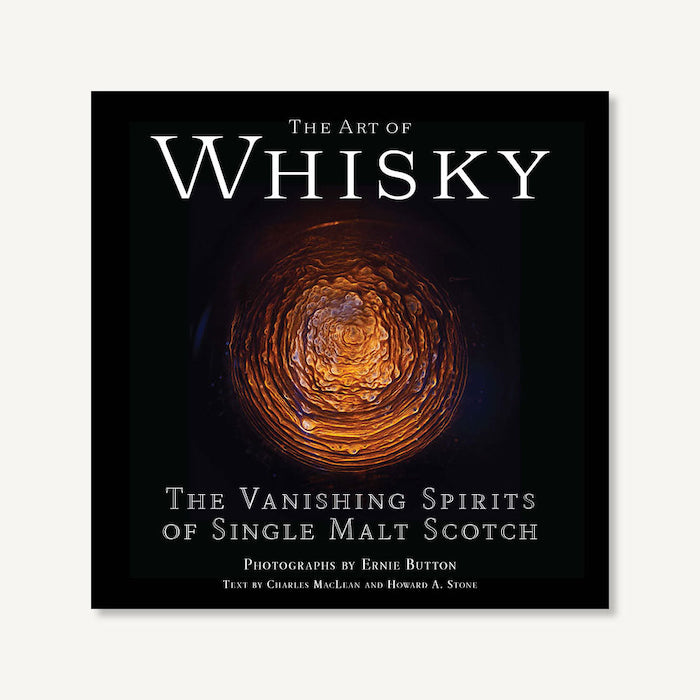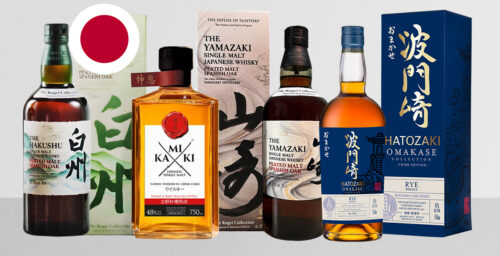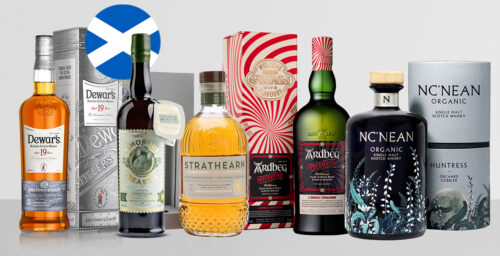Editor’s Note: This book was provided to us as a review sample by Chronicle Books. This in no way, per our editorial policies, influenced the final outcome of this review.
What do you see?
What do you see when you look at into an empty glass? Most whiskey drinkers would say “Looks like it’s time for another pour.” For world class photographer Ernie Button, the most inconsequential aspect of a glass of whisky became a 15-year long journey to produce a stunning coffee table book.
Ernie Button’s project began while staring at the evaporated dregs of Scotch at the bottom of a glass and stumbling upon something beautiful. There in the bottom of his glass was a celestial body of swirls, and a passion project like no other was born. Ernie Button would enlist the help of scientists and renowned Scotch aficionados alike to understand what exactly he was looking at.
The Art of Whisky is a coffee table book for the Scotch enthusiast. Scotch, the book alleges, is known the world over as possessing the greatest level of complexity and depths of flavor. It also happens to be the photographer’s favorite style of whisky. The book opens with a brief synopsis of what makes Scotch, well, Scotch.
The first few pages discuss how less than 3% by volume, or less than 1% by weight, of a bottle of Scotch are the chemical compounds that make a Scotch taste it does. With ethyl alcohol and water making up the rest of the volume. All the congeners, or the different chemical groups, make up the entirety of the flavors associated with Scotch: esters, aldehydes, furfural, and phenols, yet only account for a minuscule amount of the total volume.

The book explores how these chemicals interact with our senses to create the aromas, mouthfeel, and overall complexity we love about Scotch. We are even treated to a discussion on fluid dynamics by Princeton professor on mechanical and aerospace engineering, Howard A. Stone Ph. D. Dr. Stone’s roll is to discuss why Ernie’s photos of evaporated Scotch look unique from other evaporated liquids like coffee rings.
Maragoni Flows, or the motion of liquid when surface tension changes along a film, are responsible for the ‘legs’ we see in wine and whiskey, and ultimately why Scotch dries into such unique patterns. Dr. Stone reasons the long molecule (Polymers) interacting with the alcohol and water are what create the necessary conditions for the whisky to dry into unique and awe-inspiring designs.
All of this sets up the crux of what this book aims to explore. What does Scotch whisky look like, and can that tell us anything? Over the next 175 pages Ernie Button puts the reader up close with the five Scotch regions: Highland, Lowland, Campbeltown, Islay, and Speyside. We contrast a Campbeltown 5-week in cask Scotch with a 21-year-old expression. What we learn is Scotch is beautiful, in every way imaginable; what we don’t learn is anything all that practical. It’s obvious which is a 5-week-old Scotch, but to this untrained eye, everything after is indistinguishable.
I would argue there is something about where and how a Scotch is made that does leave a fingerprint in the glass. A Lagavulin Islay Scotch with its heavy peat smoke left tall peaks in concentric circles like an alien petri dish. Comparatively, a Speyside Aberlour 13-year-old had long, smooth, sweeping lines, like waves on the shore. What’s more, almost every photo showed a common ancestry or base design in the photos, but each region had a unique influence.
The book is like nothing I’ve ever seen before, and it is beautiful. Every photo evokes comparison to images like storm clouds on Jupiter, the fractured surface of Europa, or the terrestrial like old growth tree rings, ferns, snowflakes, and even the human iris. Occasionally we are treated to a tasting note of the various whiskies, but the images are the focal point. This book was clearly a labor of love from a masterful photographer. This book is perfect for every fan of Scotch whisky and will be a captivating conversation piece in anyone’s collection.







